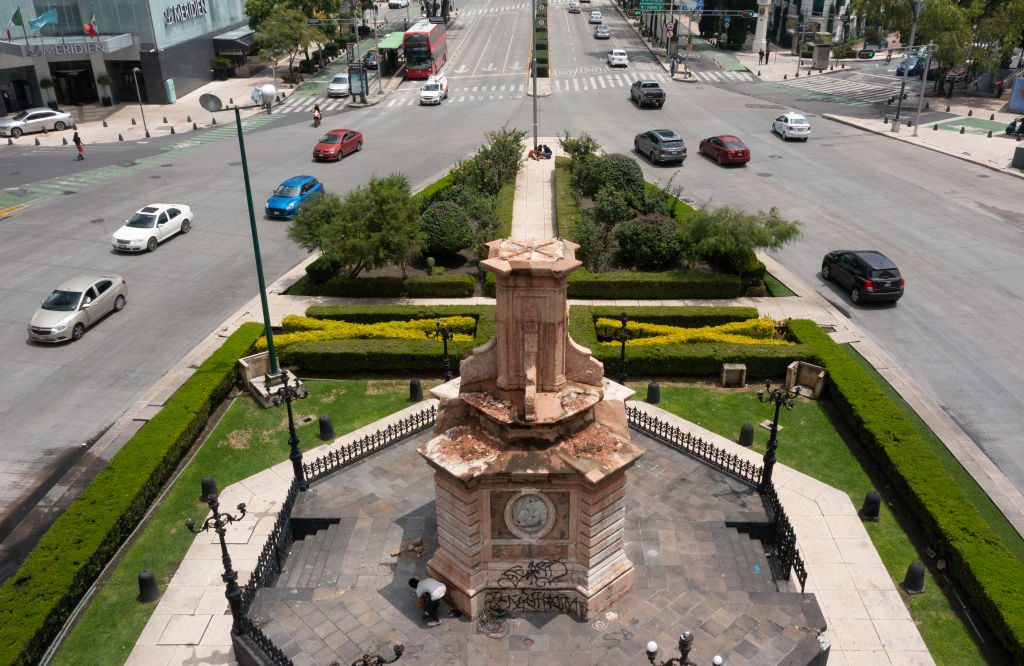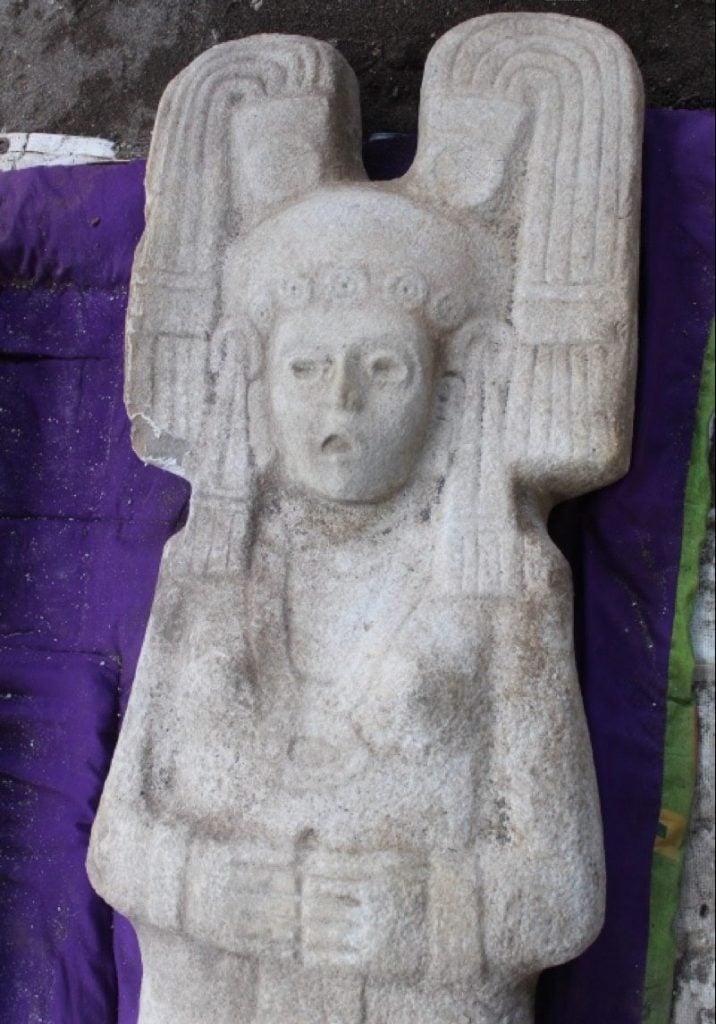Art World
Mexico City Will Replace Its Christopher Columbus Statue With a Replica of a Pre-Hispanic Indigenous Female Figure
The decision ends a long saga about what artwork should be displayed on the capital city’s Paseo de la Reforma.

The decision ends a long saga about what artwork should be displayed on the capital city’s Paseo de la Reforma.

Taylor Dafoe

A replica of a pre-Hispanic sculpture depicting an indigenous woman will be installed on one of Mexico City’s busiest boulevards, permanently replacing a prominent statue of Christopher Columbus.
Mexico City’s head of government, Claudia Sheinbaum, announced the news yesterday—the anniversary of Columbus’s arrival in the Americas—explaining that the new monument is part of the “decolonization” of the capital city’s Paseo de la Reforma. The figure, she said, “will be the one who represents us women and in particular, the indigenous women of our country,” she said.
The decision ends a lengthy saga about what artwork should be displayed on the capitol city’s Paseo de la Reforma. Mexican artist Pedro Reyes was originally commissioned for the job, for which he planned to make a sculpture of a woman from the Mesoamerican Olmec civilization.
“It is very important to dedicate a monument to indigenous women and to the earth, because if someone can teach us how to take care of this planet, it is our native peoples and that is precisely what we must learn again,” the artist said at the time.

The “Young Woman of Amajac” statue discovered earlier this year. Courtesy of the National Institute of Anthropology and History. Photo: Photo: María Eugenia Maldonado Vite.
But less than two weeks later, Reyes was pulled from the project after an outcry from artists and activists who argued that a male sculptor should not have been chosen to depict or memorialize indigenous women. In an open letter addressed to Sheinbaum, six women artists called Reyes’s proposal “a generalization that negates the particularities and diversity of the women who self-identify as members of Native nations and peoples, and places their image in the hands of a white-mestizo man.”
The six-foot-tall limestone statue on which the new monument will be based was discovered by archaeologists in January, and is currently housed in Mexico City’s National Museum of Anthropology. It’s referred to as the “Young Woman of Amajac” after the village where it was unearthed, in the Huasteca region, near Mexico’s Gulf Coast.
#EnVivo ?? Con integrantes del Comité de Monumentos y Obras Artísticas en Espacios Públicos de la Ciudad de México, @INAHmx, @CulturaCiudadMx y @SOBSECDMX, presentamos el proyecto de la Escultura “La Joven de Amajac”. https://t.co/ChwzIsCpFp
— Claudia Sheinbaum (@Claudiashein) October 12, 2021
Based on her posture and dress, experts believe the woman may have depicted a member of the ruling class and was perhaps the Huastec goddess of earth and fertility. Little else is known about the figure’s origins.
The replica planned for the Paseo de la Reforma will be over three times the size of the original—and even taller than the bronze Columbus monument erected on the site over 150 years ago.
The Columbus statue has been absent from view since October 2020, when the city removed it, ostensibly, for cleaning. But many speculated at the time that it was taken down as a preventative measure in advance of Dia de la Raza, Mexico’s version of Columbus Day—an occasion that had prompted vandalization of the sculpture many times in the past.